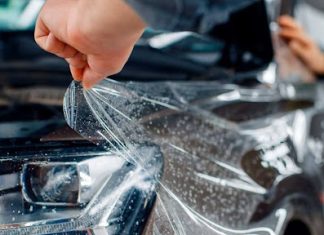As a parent, you want the best for your little one, from feeding to healthcare and skincare. Baby skin is fragile because it is thinner and softer than adult skin. Research shows that it is more susceptible to infections. You must go the extra mile with care and safety from external irritants and elements.
The early years are the trickiest in this context because scientific studies demonstrate that infant skin develops during the first year of life. You have to be meticulous with the skincare routine and choice of products for your bundle of joy during this phase. If you fail to pay attention, you may do more harm than good, despite the best intentions.
Awareness is the best defense, so you must understand what’s right or wrong for your baby’s delicate complexion. Here is a list of blunders you must absolutely avoid in the early years.
Content Summary
Blunder #1: Not Reading Product Labels
Reading product labels is something you should embrace as a habit, but busy parents seldom go beyond the expiration dates. Check the ingredient list of any skincare product you buy for your little one. Even harmless-looking items like baby powder can be a health hazard in the long run. While using it to keep your baby fresh and dry, you may hardly realize that the product can elevate the risk of cancer.
That sounds gross, but the Johnson and Johnson talcum powder lawsuit update for 2023 highlights that talc ingredients such as silicon, magnesium, oxygen, and hydrogen elevate the risk of ovarian cancers in females. Moreover, the inhalation of talc particles may lead to severe lung disease.
According to TorHoerman Law, talcum powder lawsuits could entail significant settlements between $100,000 and $1 million. Parents of children suffering due to exposure to toxic ingredients must seek justice, even if it means fighting against a renowned brand.
You can avoid such dire implications by being extra vigilant about product labels on baby products. Think beyond the ones for direct skin application, and also check the ingredient lists for detergents for washing their clothes.
Blunder #2: Not Checking the Hidden Areas
Diaper rash is probably on top of your checklist when it comes to the problem areas for your little one. When did you last check the hidden spots like the back of the knees, the creases near the elbows, and behind the ears?
Sweat accumulates easily in these areas, creating a favorable environment for the bacteria to thrive. Ensure checking them daily and keeping them clean and dry. Your baby’s skin may look fresh and flawless, but problems may aggravate in the most unexpected places if you make this mistake.
Blunder #3: Wiping or Bathing Too Often
Surprisingly, wiping or bathing your baby too often can be a problem because there’s such a thing as cleaning too much. It can strip away the natural oils, breaking the natural defenses and causing dryness and cracks.
Wet wipes are a convenient way to clean your tiny tot, but they contain harsh antiseptic ingredients that can affect the natural pH. The last thing you should do is go overboard with hygiene. Wipe the wet areas gently with a soft cloth and let them air dry.
Blunder #4: Trying DIY Treatments for Flare-Ups
Did you know that even newborns may suffer from acne, warts, and hives? Or they may have allergies leading to skin issues. Trying DIY treatments and home remedies is the worst way to address them, no matter how confident you feel about using these remedies.
The best way to address the concern is by seeing a specialist. They treat the problem by addressing the root cause instead of resolving the symptoms. Your child may need more than itch creams for problems like allergies. Some issues are resolved with antibiotics and painkillers, so let a doctor work on them.
Blunder #5: Not Watching Out for Sunburn
Soaking up the sun seems great for you and your newborn, but not watching out for baby sunburn is a blunder. Since infant skin is delicate, the sun can be extra harsh on it. Avoid exposure to direct sunlight during the first few months of life.
You can ask your specialist for recommendations for baby sunscreen once you start taking the little one for strolls and picnics on sunny days. Covering the child with a hat and an umbrella is a good idea. If you see signs of sunburn, call your child’s pediatrician sooner than later. Never overlook the problem, even if it appears minor.
Wrapping Up
Infant skin deserves the best TLC, and the ideal start you can get is by avoiding these common blunders. The more cautious you are, the less likely you need help. Always pick quality products from top brands, and stick with safe, natural ingredients. Most importantly, see a doctor when in doubt.






